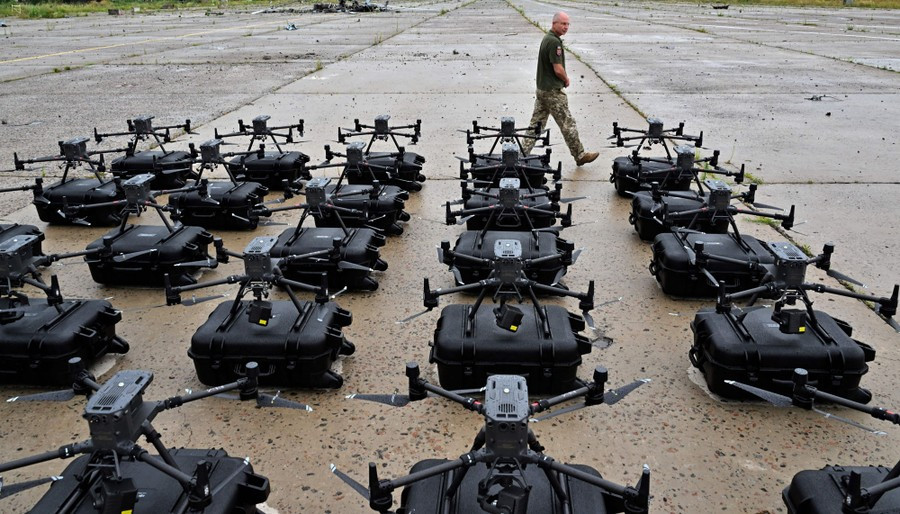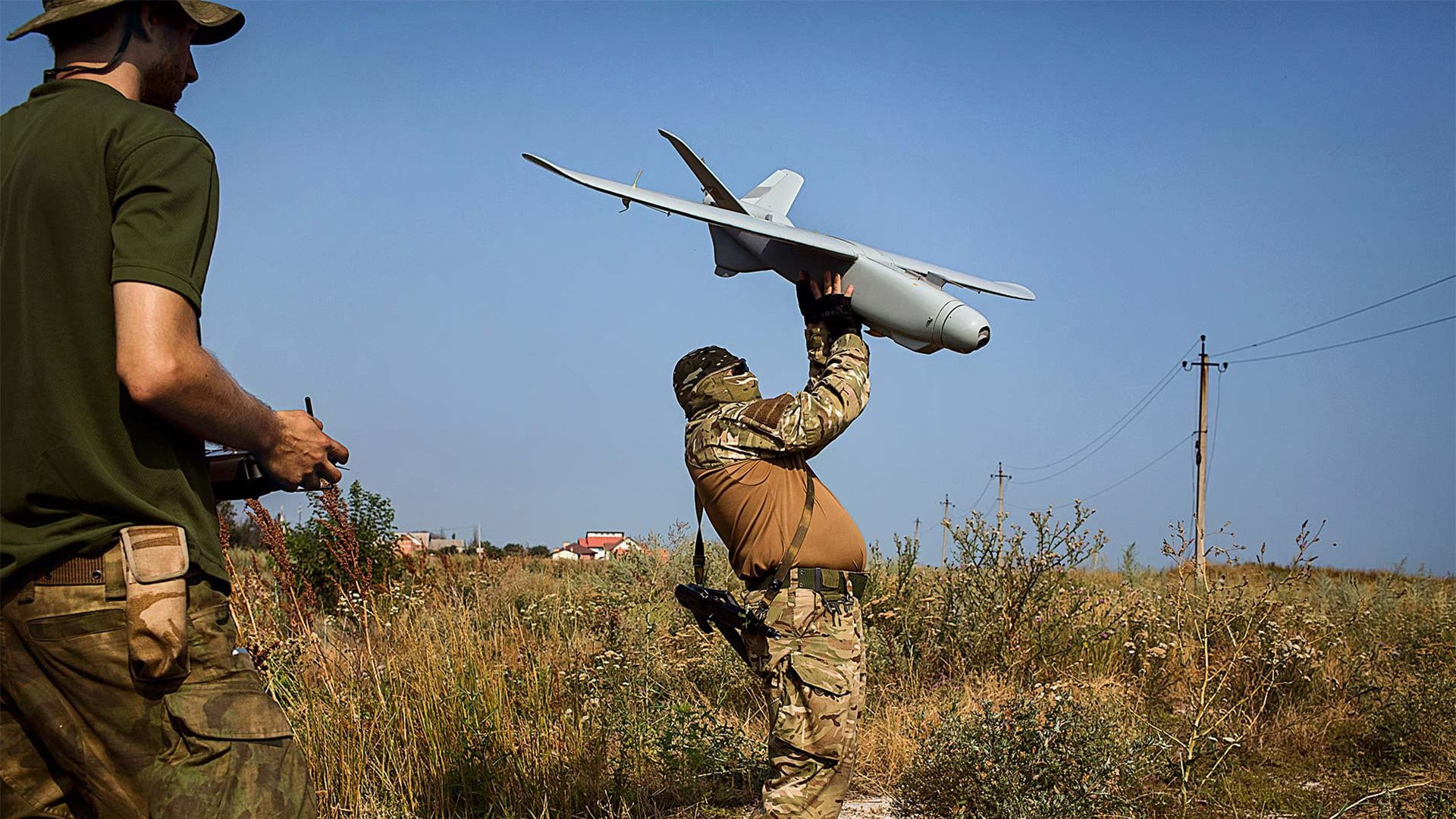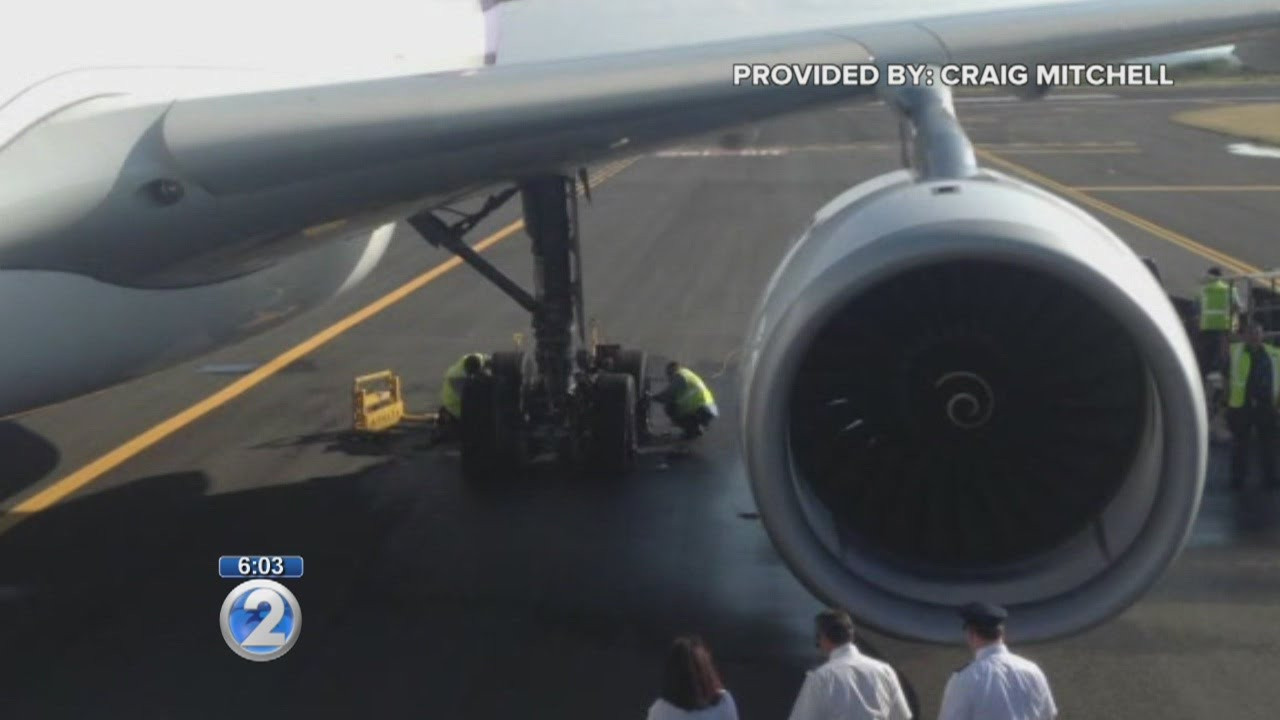From Fintech CEO to Drone Warfare: How One Ukrainian's Startup is Revolutionizing Battlefield Surveillance
The day Russia invaded Ukraine, Ivan Kaunov, a 30-year-old fintech CEO, watched in disbelief from his Kyiv apartment as rockets rained down on his city. His life, marked by the success of his startup and the comfortable life of a scion of a wealthy Kyivan family, took an unexpected turn. He had completed mandatory military training years prior, a requirement he never anticipated using. “I said ‘I’ll go fight if there’s ever a war,’” Kaunov chuckled, reflecting on his naivete. “I never thought it would happen. I was sure there would be no invasion. I was thinking, ‘It’s the 21st century.’”
From the Trenches to the Tech World
Kaunov’s initial response was to join the fight. Leading 150 recruits in defending a village near Bakhmut, he experienced the brutal realities of war firsthand. A rocket attack resulted in a head injury, ruling out further infantry assaults. However, his experience and background provided a new avenue for contributing to the war effort: drones. After a year of piloting reconnaissance drones, he identified a critical need for improved guidance systems. He envisioned a drone that could withstand Russian jamming and kamikaze attacks, a drone that could survive and continue its mission. This vision birthed Buntar Aerospace, named after the Star Wars: Rogue movie's Ukrainian translation.
The Rise of Buntar Aerospace
Buntar Aerospace quickly gained traction, securing nearly $3 million in investment from Ukraine, the EU, and the U.S. Kaunov's ambition was to create a premium drone, a stark contrast to the cheap, disposable kamikaze drones that had become synonymous with Ukraine's resistance. This strategic move aimed at establishing a high-quality, reusable surveillance drone, a “Cadillac” of Ukrainian military technology.
Buntar's Technological Prowess
The Buntar-3, their latest model, exemplifies this ambition. Sold in kits of two for roughly $200,000, the drone is equipped with primarily Western components, showcasing the company's access to sophisticated technology. The radios are high-end U.S. imports from L3Harris, Persistent Systems MQ5, and Silvus, underscoring a commitment to cutting-edge communication systems. The cameras, including night vision capabilities, can cost up to $75,000, representing a significant investment in image quality and surveillance capabilities. The company's use of US and UK components signifies the international collaborative effort bolstering Ukraine's defense capabilities, and the reliance on Chinese wiring only serves to highlight the global scope of technology procurement in modern warfare.
A Departure from the Norm
While Ukrainian drone pilots traditionally rely on inexpensive, often disposable drones, mostly analogs of Chinese-made consumer models like DJI Mavics, Buntar aims for a higher standard. Their focus is not merely on quantity, but on quality and reusability. The improved connectivity demonstrated during front-line tests, boasting 98% uptime compared to the 30% average of other drones, demonstrates the effectiveness of their high-quality components. The Buntar-3's 3-hour flight time also positions it competitively with established Western models from companies like Quantum Systems (Germany) and Threod (Estonia). These technologies clearly demonstrate the rapid innovation in the Ukrainian drone industry fueled by necessity and international support.
Beyond the Battlefield: A Global Market?
Buntar's aspirations extend beyond the immediate needs of the Ukrainian war effort. The company recognizes the potential of its technology in the global arms market, hoping to capture a share of the Western market that has been intensely following the war in Ukraine. This ambition is not only driven by profit, but by a desire to showcase Ukrainian ingenuity and technological capabilities on the world stage, underscoring the country's evolving position in global defense technology.
Software as a Key Differentiator
Beyond the hardware, Buntar’s CoPilot software, a navigation and autopilot system, offers significant potential for scalability. Its registration abroad allows for easier export to foreign militaries, circumventing some of the restrictions faced by hardware manufacturers operating solely within Ukraine. This strategic move positions the company for future international expansion and underlines the importance of software in the broader military-tech landscape. The software's ability to adapt to new hardware and mission types further enhances its marketability, showcasing adaptability as a crucial attribute in the ever-evolving field of drone technology. The fact that Ukraine's Ministry of Defense limits profit margins on military hardware to 25% over cost presents a considerable challenge for Buntar, as well as other domestic arms manufacturers, highlighting some of the difficulties of competing with more established entities in the West.
The Future of Buntar and Ukrainian Drone Technology
Buntar’s success story, marked by rapid growth, substantial funding, and promising technology, stands as a testament to the resilience and innovation of Ukraine’s military-tech sector. However, challenges remain. Concerns about battlefield readiness persist despite positive investor feedback, highlighting the importance of continued testing and refinement. The ability of Buntar's high-end drones to withstand the rigors of combat will ultimately determine its success. Whether Western buyers will embrace a Ukrainian drone competing directly with established companies from Germany, the U.K., or Israel is yet to be seen. The company's future rests on the continued refinement of its technology, the ability to meet stringent Western military requirements, and the maintenance of the support from various international investors.
While the war creates immediate demand, the long-term sustainability of Buntar and similar Ukrainian companies hinges on securing international contracts and adapting to the demands of a fiercely competitive global market. Success will depend on continued innovation and international collaboration. The company's strategy of leveraging Western investment and focusing on software development provides a strategic advantage in navigating these challenges. The coming months will be crucial in proving the reliability of the Buntar drones, demonstrating a potential paradigm shift within the military technological domain. The ongoing conflict presents both challenges and opportunities for Ukrainian innovation in military technology, a sector already showcasing its remarkable potential. The future remains to be seen.


















